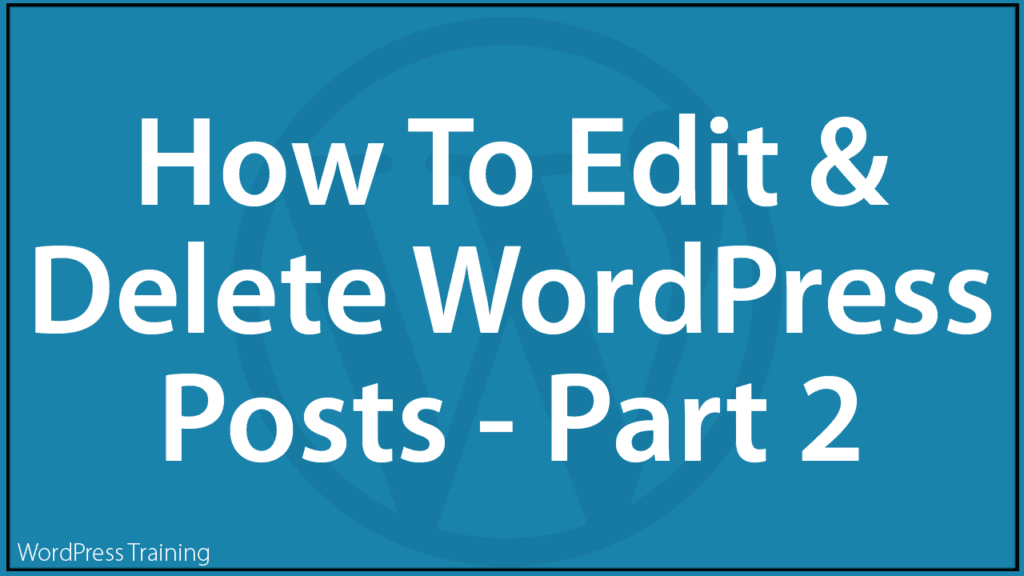How To Edit And Delete WordPress Posts – Part 2
 This is Part 2 of the tutorial on how to edit and delete posts in WordPress.
This is Part 2 of the tutorial on how to edit and delete posts in WordPress.
In Part 1, we looked at the built-in features and functions of the WordPress Table of Posts.
In this tutorial, you will learn:
- How to edit and delete individual and multiple posts in WordPress,
- How to perform single and bulk post edits and deletions
- Practical and time-saving tips for creating content using posts.
![]()
This tutorial uses the WordPress classic editor.
Learn how to use the WordPress Block editor in this tutorial: The WordPress Block Editor
The WordPress Posts Screen
To access the WordPress Posts section, log into your WordPress admin then go to the main navigation menu and select Posts > All Posts.
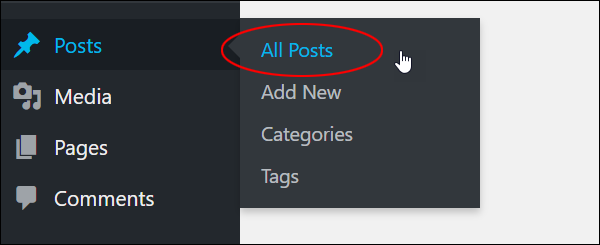
This brings up the Posts screen with the WordPress Table of Posts.
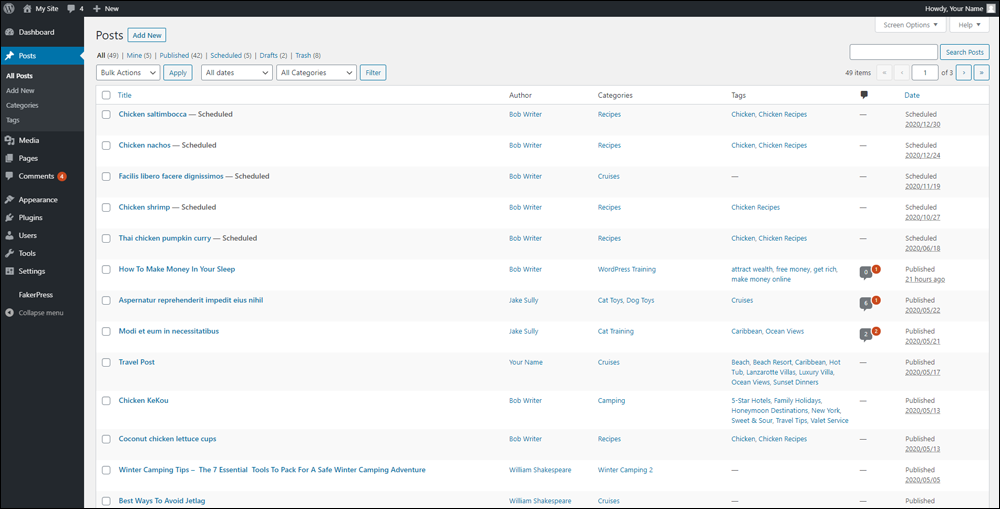
Here, you can:
- Create a new post.
- Sort, search, or filter posts using various filters and options.
- Edit single/multiple posts.
- Delete posts individually or in bulk.
Let’s begin by looking at how to edit your posts.
How To Edit Posts In WordPress
WordPress lets you edit posts individually or make bulk changes to multiple posts.
How To Edit Single Posts In WordPress
To edit a single post in WordPress, locate the post in the Table of Posts, then hover over the post title to display your post management options menu, and click on the Edit link.
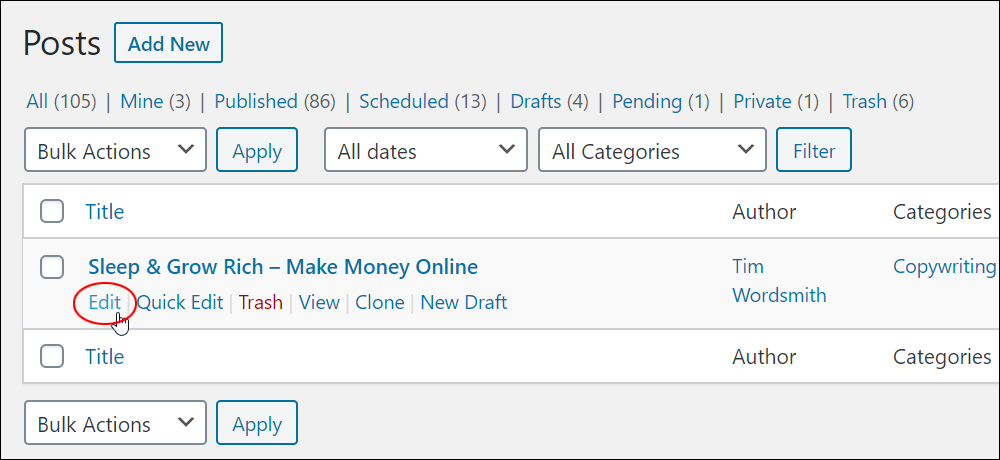
The post will open in the Edit Post screen.
Depending on which editor you are using (i.e. Classic Editor vs Block Editor), which options are enabled/disabled in the Screen Options Tab, and which theme you have installed on your site, a typical Edit Post screen might look like this:
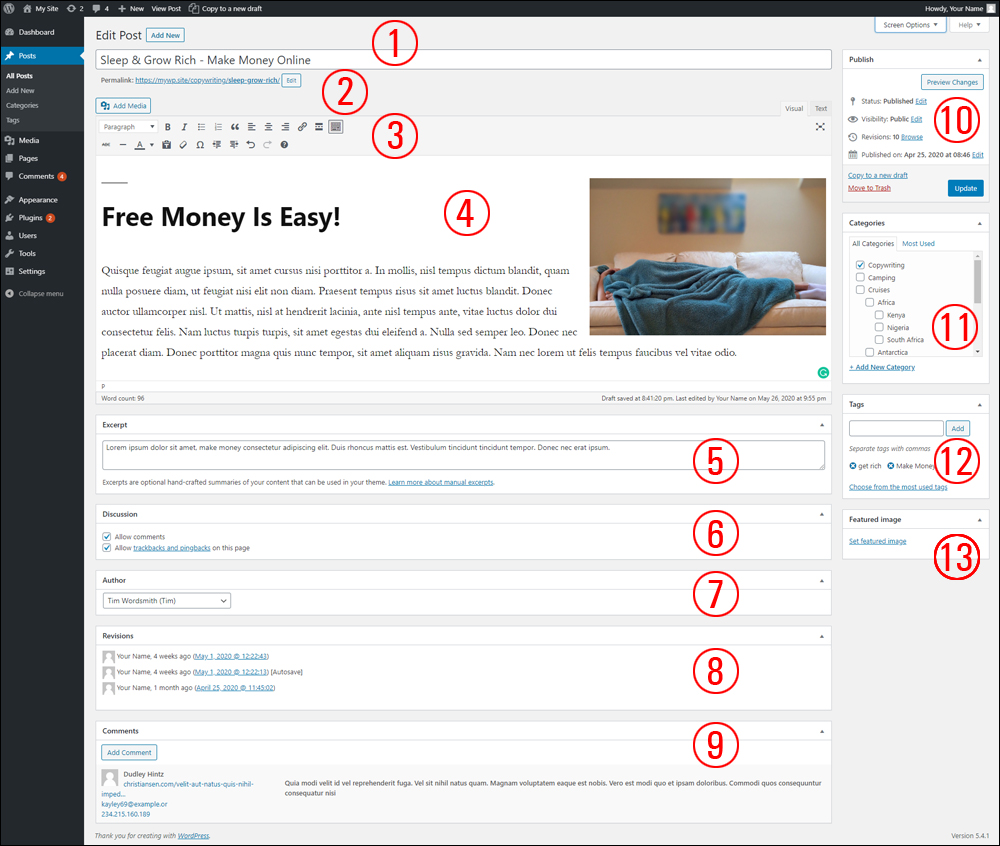
Here, you can edit the following sections of your post:
- Post Title – Add/change your post title or article headline.
- Permalink – Change your post slug (the words that appear in your post URL).
- Visual/Text Editor Menu – The WordPress Classic Editor provides menu buttons with all the features and functions you need to edit and format your content. These menu buttons let you add, edit, or delete text, insert and delete images, add videos and media, etc. Additionally, installing certain plugins on your site can add new functions and buttons to the editor menu.
- Content Area – This is where you edit the content of your post.
- Post Excerpt– Add/edit a custom post excerpt.
- Discussion – You can enable/disable discussion options and override global discussion settings on a post-by-post basis.
- Post Author – Change the post author (if you have multiple authors or users with author privileges).
- Post Revisions – Go back to view or restore earlier revisions and saved versions of your post.
- Comments – View and manage all comments left on your posts by site visitors, readers, members, users, etc.
- Post Publish Box – Edit your post publish settings here. For example, you can make your post sticky, private or password-protected, or schedule it to publish at a later date.
- Post Categories – Edit your post categories in this section by selecting, deselecting, or adding new categories. To add a new category to your post click on the ‘+ Add New Category’ link.

Post Categories section. - Post Tags – Add or delete post tags here. To add tags to your post, type in your tags separated by commas into the Tag field and click on the ‘Add’ button (see the example below).

Post Tags section. - Featured Image – Add or replace a featured image for your post.
![]()
Note: You can display or hide the feature boxes below the content area in the Screen Options Tab and reorder these on your screen using drag and drop.
Depending on your WordPress theme, you may also be able to edit your post format.
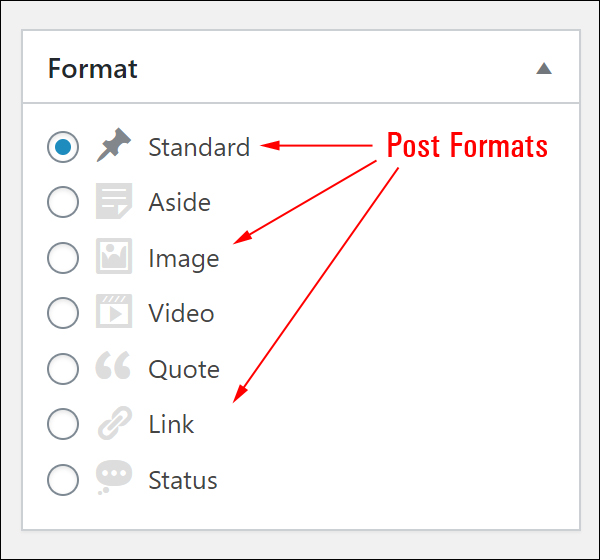
After editing your content or making changes to your posts settings, click on Publish > Update to save your post edits.
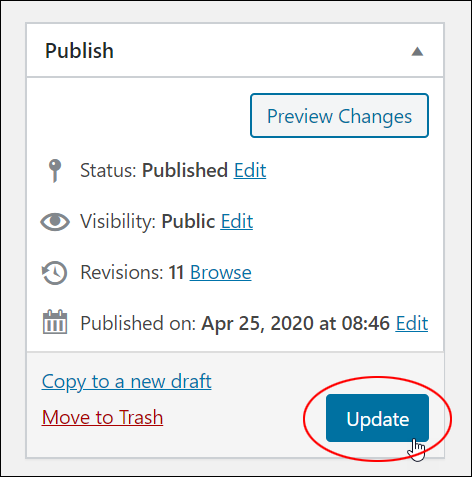
After editing your post and saving your changes, you can view these by clicking either on the ‘Post Updated. View post’ link (1) or the ‘Preview Changes’ button (2).

Note: You can also view any edits you make to draft posts while working in the Edit Post screen without publishing your post by clicking on the ‘Preview’ button in the Publish section.
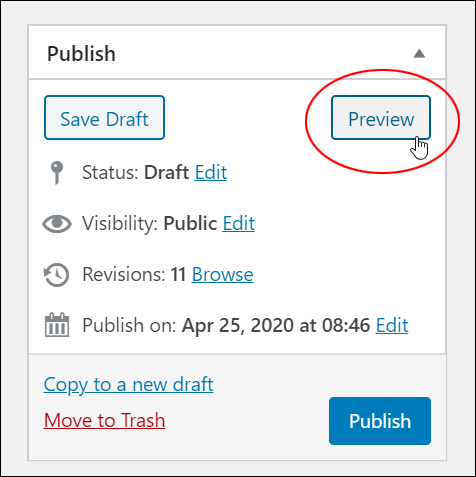
![]()
A feature that is often overlooked is that post edit screen features can be easily reconfigured on your Post Edit screen to help you work more efficiently when editing posts.
To:
- Hide/display, enable/disable Post Edit screen features, use the Screen Options Tab.
- Collapse or expand feature boxes, click the little triangles next to the feature titles.
- Rearrange different features and sections on your screen, use drag and drop.
For example, you may want the Featured Image section to be located higher up on your screen or reorder the post tags or post categories features to display above the post formats feature.
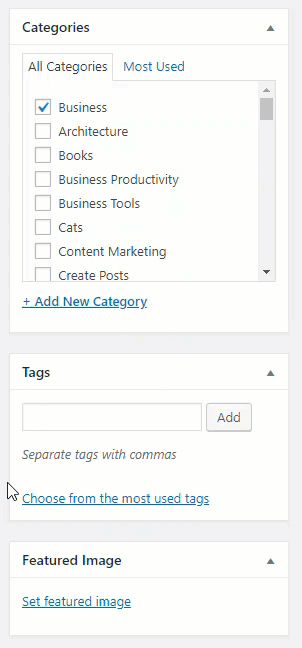
Similarly, you may want to view your Post Excerpt box immediately below your content area and move the Post Author section below your Comments or Discussions boxes.
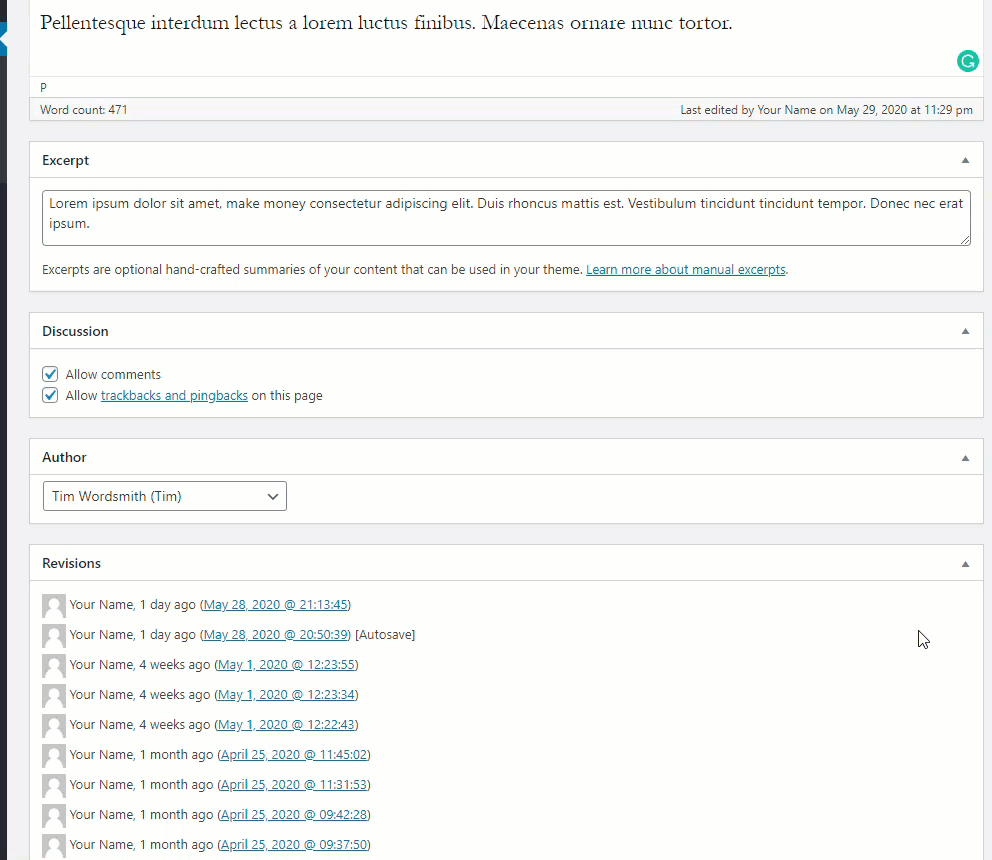
Now that you know how to edit a post in WordPress, let’s look at how to delete your posts.
How To Delete Posts In WordPress
WordPress lets you delete a single post or make bulk post deletions.
This section shows you how to delete single and multiple posts in WordPress.
How To Delete Single Posts In WordPress
In the Table of Posts, locate the post you want to delete, then hover your cursor over the post title to display your post management options and click on the ‘Trash’ link.
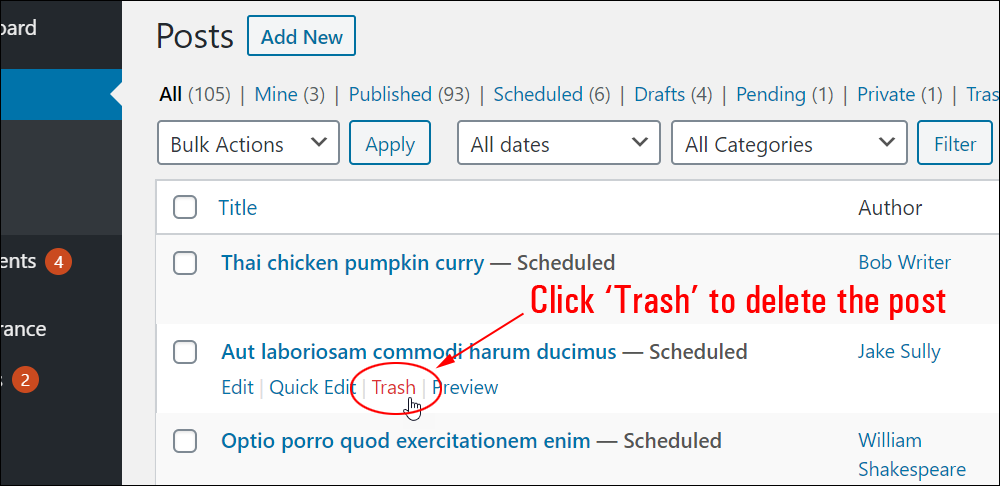
Your post will be moved to the Trash (1). Posts can be restored to the Table of Posts by clicking on the ‘Undo’ link (2) immediately after sending items to the trash.
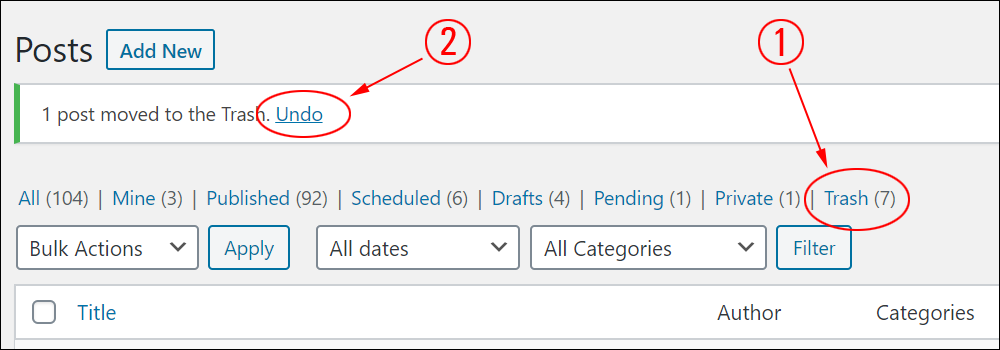
To delete the post permanently, click on the ‘Trash’ link on the post status menu.

This displays all the items you’ve sent to the Trash. Hover over the post title to display your trash post options and click on the following:
- Restore – restores your post to the Table of Posts
- Delete Permanently – deletes your post permanently.
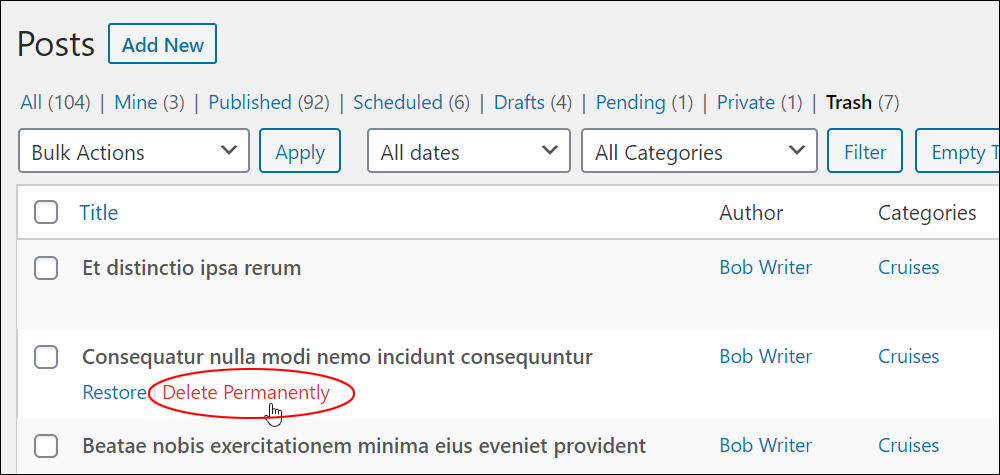
If you click ‘Delete Permanently,’ a message will display on your screen confirming that the post has been permanently deleted.

![]()
You can also delete posts while working in the Post Edit screen by clicking on the ‘Move to Trash’ link in the Publish section.
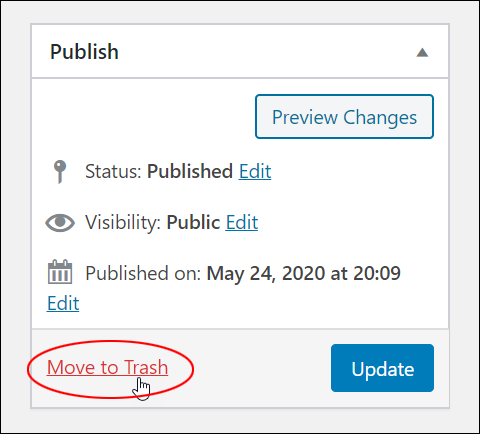
Bulk Editing And Deleting Posts In WordPress
You can edit and delete multiple posts in WordPress. This is a useful feature for performing bulk administration tasks like removing old or unwanted posts or making bulk edits to post meta information.
To bulk edit or delete posts, select the posts from the Table of Posts list. You can select multiple posts by clicking on the checkbox next to each post or select all posts by clicking on the checkbox next to the main Title column header, then deselect individual posts.
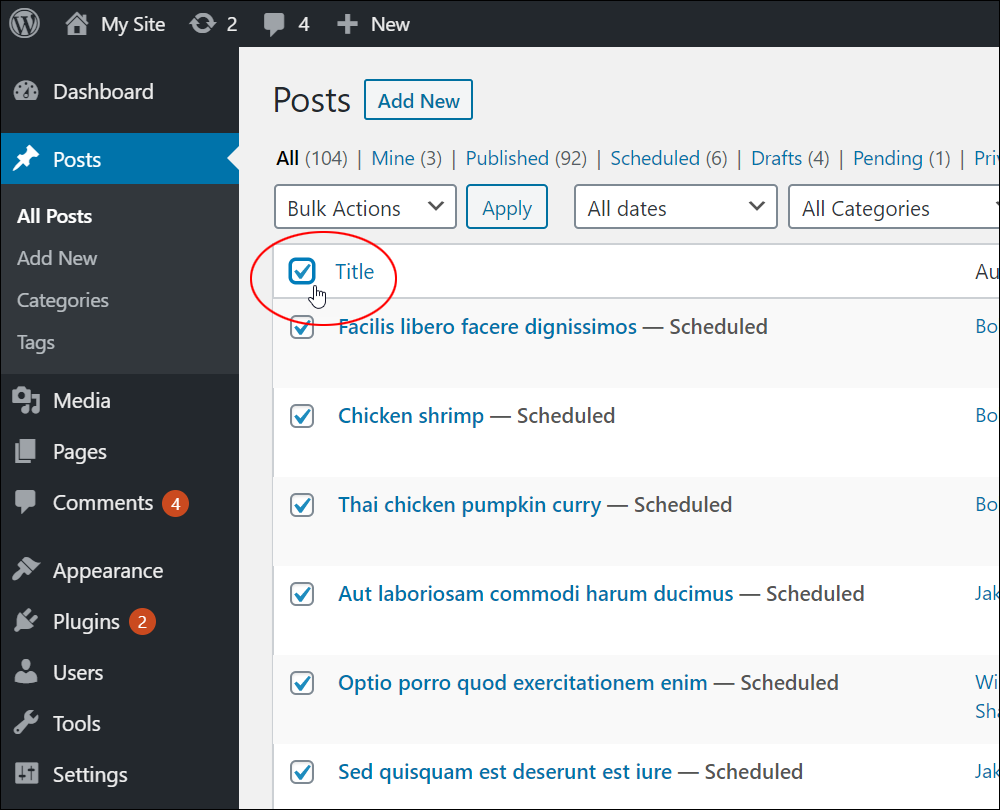
After selecting posts, choose the option to either ‘Edit’ or ‘Move to Trash’ from the Bulk Actions dropdown menu and click the Apply button.
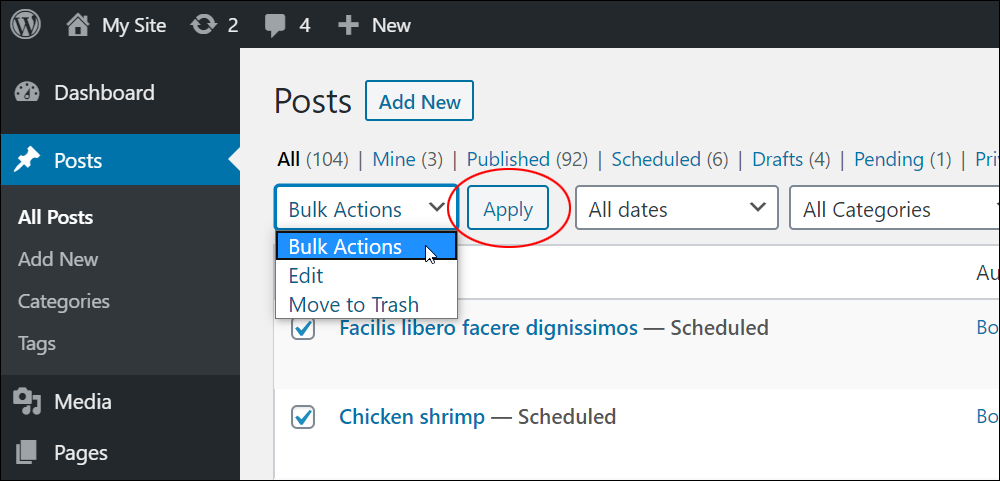
How To Bulk Edit Posts In WordPress
To bulk edit posts:
- Select one or more posts,
- Choose ‘Edit’ from the Bulk Actions dropdown menu,
- Click Apply.
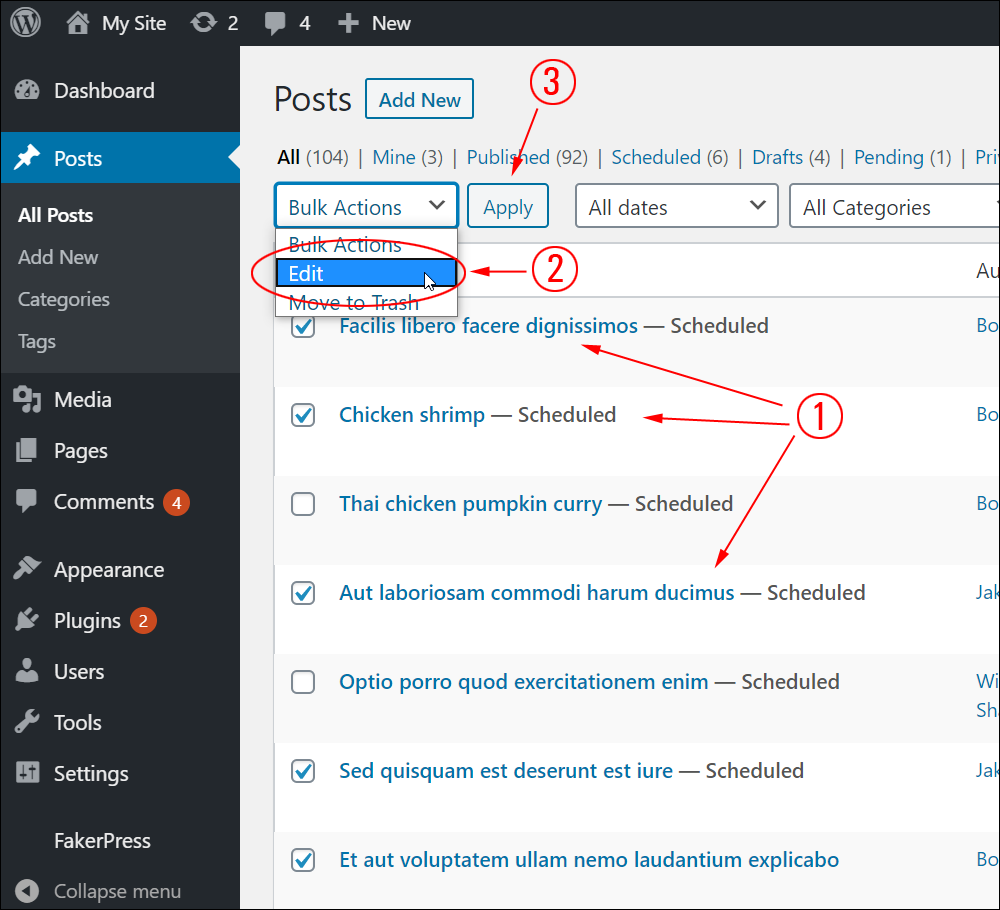
When you select Bulk Actions > Edit, various options display in the inline bulk editor feature.
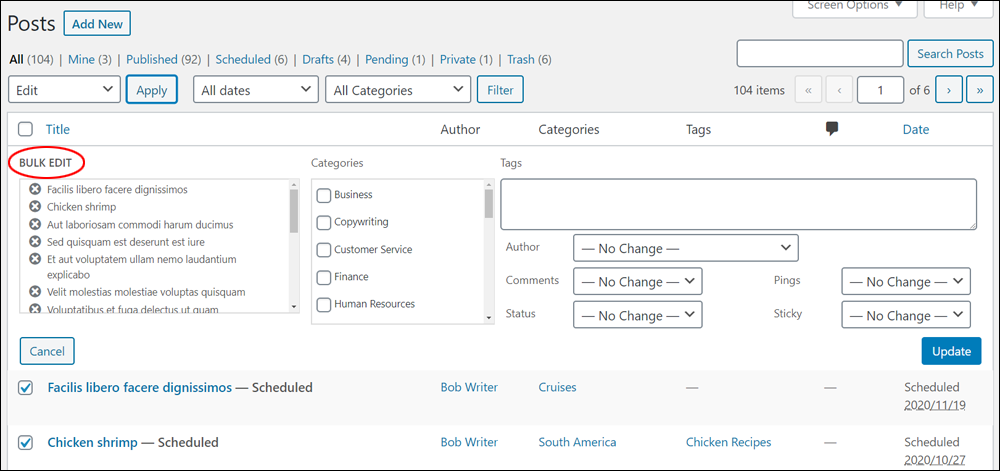
The Bulk editor lets you edit the following in your selected posts:
- Categories – You can ADD one or more categories to multiple posts, but you cannot CHANGE or DELETE categories for the selected posts using the bulk editor feature.
- Tags – You can ADD one or more tags to multiple posts, but you cannot CHANGE or DELETE tags for the selected posts using the bulk editor feature.
- Author – Change (reassign) the post author for all selected posts.
- Comments – Use the dropdown menu to enable/disable comments for all selected posts.
- Status – Use the dropdown menu to change the status of all selected posts (e.g. Published, Private, Pending Review, Draft).
- Format – Use the dropdown menu to change the Post Format of all selected posts (e.g. Standard, Aside, Gallery, Link, Image, Quote, Status). Note: this option depends on the theme you are using and may not display in the bulk editor.
- Pings – Use the dropdown menu to enable/disable pinging for all selected posts. If “Do not allow” pings is selected, no one will be able to post pingbacks or trackbacks to those posts. Pinging is configured in your WordPress Discussion settings (Settings > Discussion).
- Sticky – Use the dropdown menu to change all selected posts to either sticky or not sticky. To learn more about making WordPress posts sticky, see this tutorial.
After you have finished bulk editing your posts, click the ‘Update’ button to save your new post settings and return to the Table of Posts or click the ‘Cancel’ button to exit from the Bulk Edit screen without saving your changes.
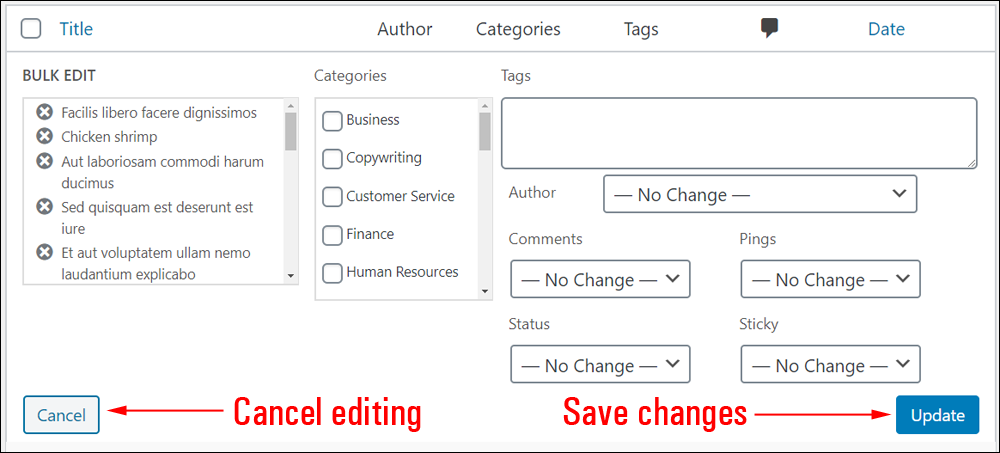
How To Bulk Delete Posts In WordPress
To delete multiple posts in WordPress at once:
- Select one or more posts,
- Choose ‘Move to Trash’ in the Bulk Actions dropdown menu,
- Click the ‘Apply’ button.
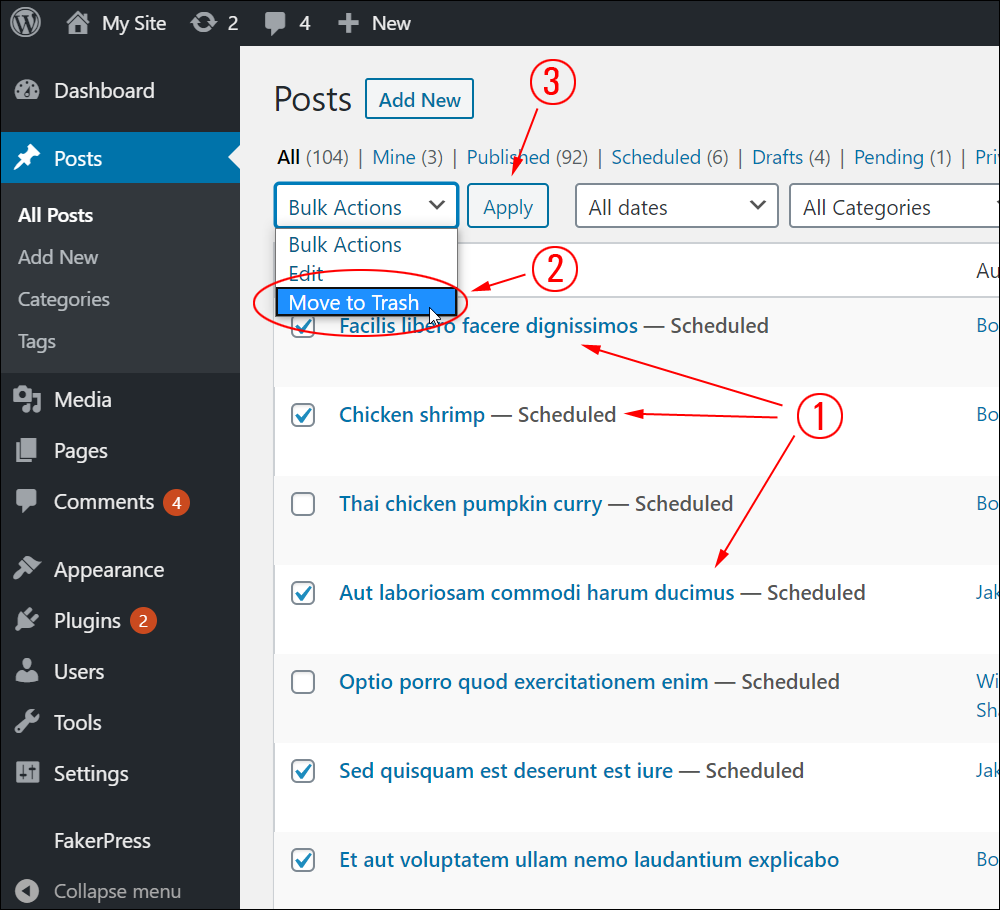
When you select Bulk Actions > Move to Trash, your posts will be moved to the Trash (2). Posts can be restored to the Table of Posts by clicking on the ‘Undo’ link (1) immediately after sending items to the trash.

Clicking on the ‘Undo’ link restores your trashed posts to the Table of Posts.

To delete your posts permanently, click on the ‘Trash’ link on the Post Status menu.

This lets you see a list of all the posts you’ve sent to the Trash. Select post(s) by ticking the checkboxes next to their post title, then go to the Bulk Actions dropdown menu and choose either:
- Restore – restores your post(s) to the Table of Posts
- Delete Permanently – deletes your post(s) permanently.
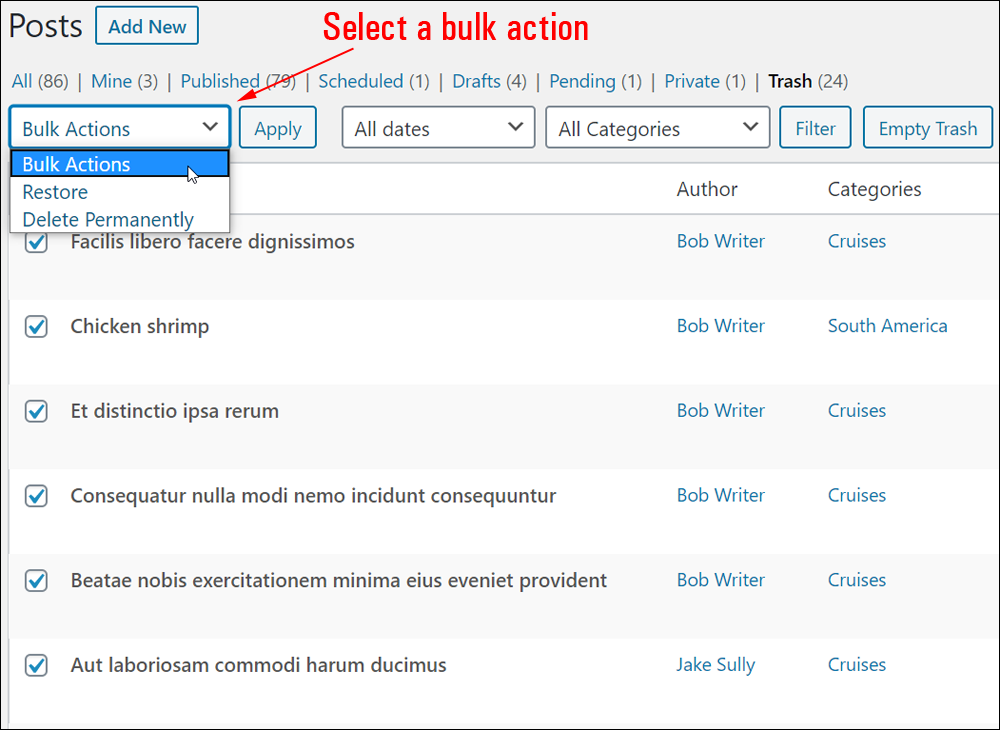
You can also delete all posts permanently by clicking on the ‘Empty Trash’ button’.

If you chose ‘Restore’ from the Bulk Actions dropdown menu, your posts will be restored to the Table of Posts from the Trash.

If you choose ‘Delete Permanently’ from the Bulk Actions dropdown menu, your posts will be permanently deleted.
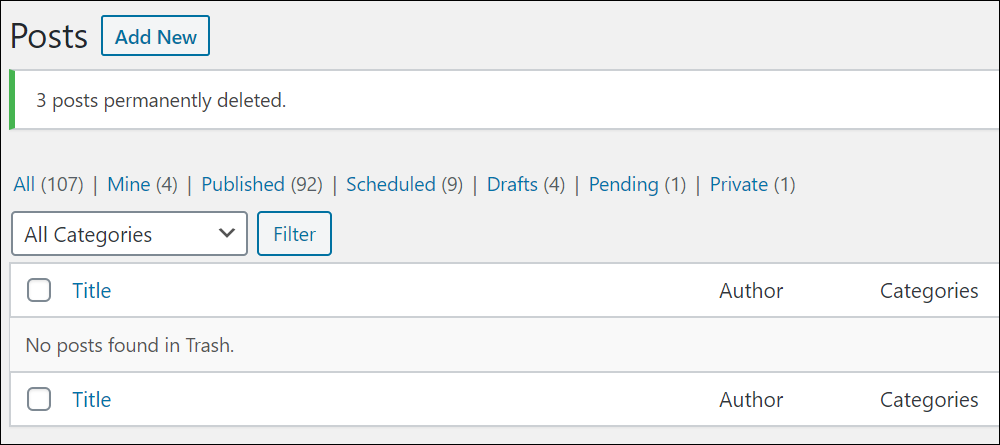
Editing And Deleting Posts In WordPress – Useful Tips And Additional Information
![]()
Tip #1: You can access the Posts screen from your Dashboard by clicking on the ‘Posts’ link in the At a Glance panel.
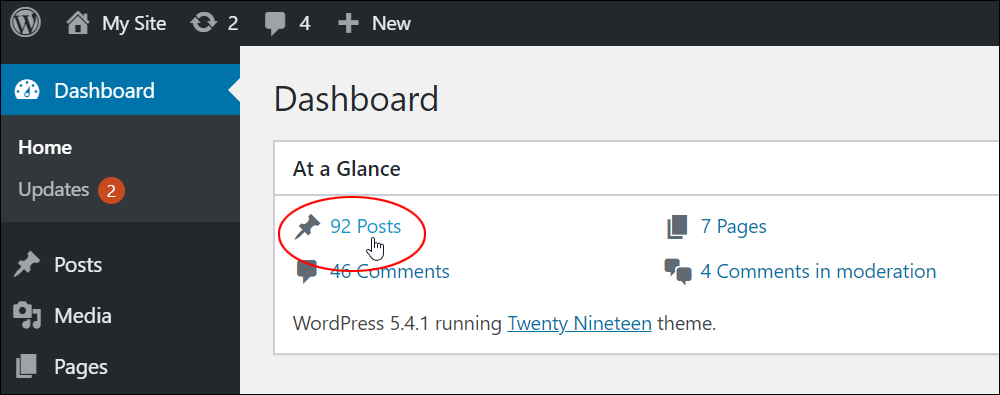
Tip #2: You can set the number of posts to display in the Posts screen by clicking on the ‘Screen Options’ tab near the top right-hand corner of your screen.

Enter the number of posts to display in the Pagination > Number of items per page field and click Apply.
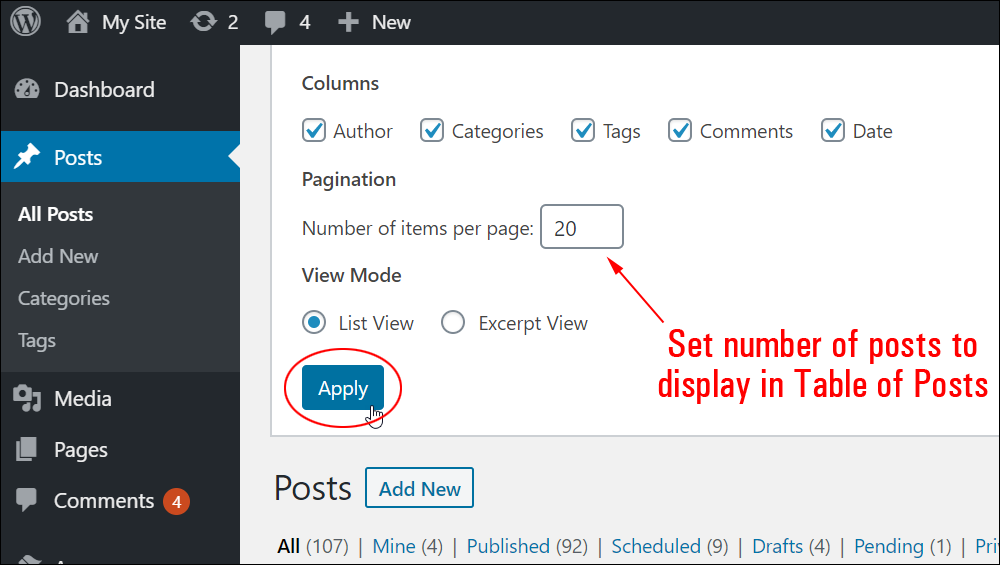
WordPress pagination features display depending on how many posts per page you specify.
Depending on how many posts you have set to display per page, you may or may not see the pagination feature on your screen (i.e. if all your posts can fit on one page, then there’s no need for pagination).
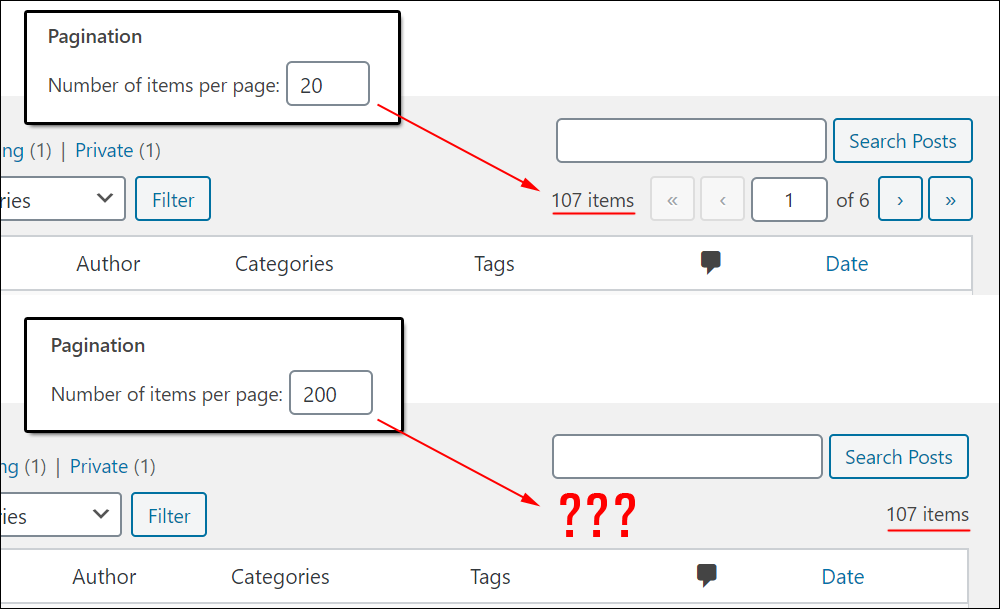
Tip #3: The Screen Options section also lets you display/hide specific columns in the Table of Posts.
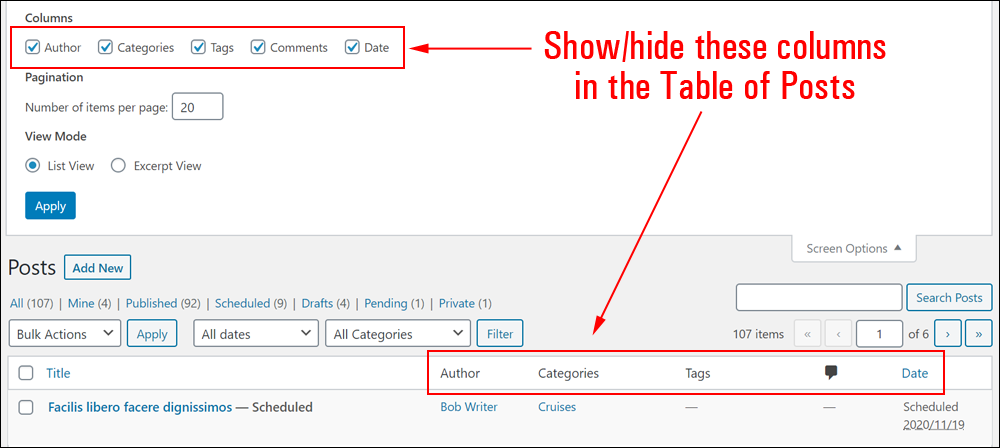
For example, here is a screenshot of the Table of Posts with all column options disabled…
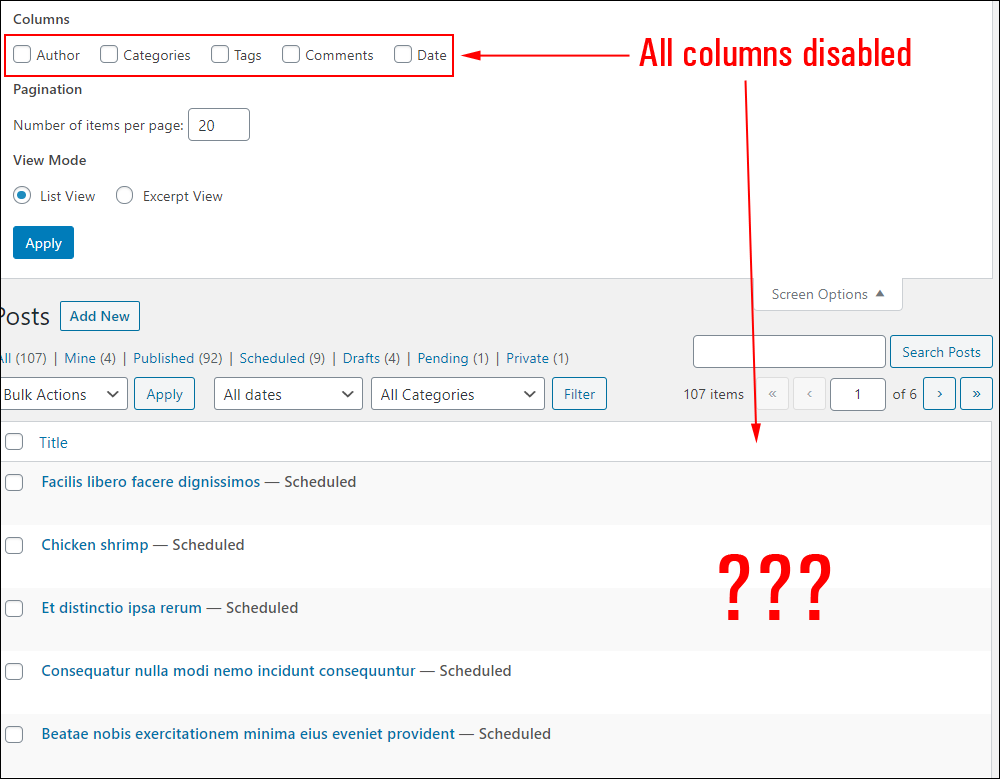
You can also enable/disable options in the Edit Post screen while editing individual posts.
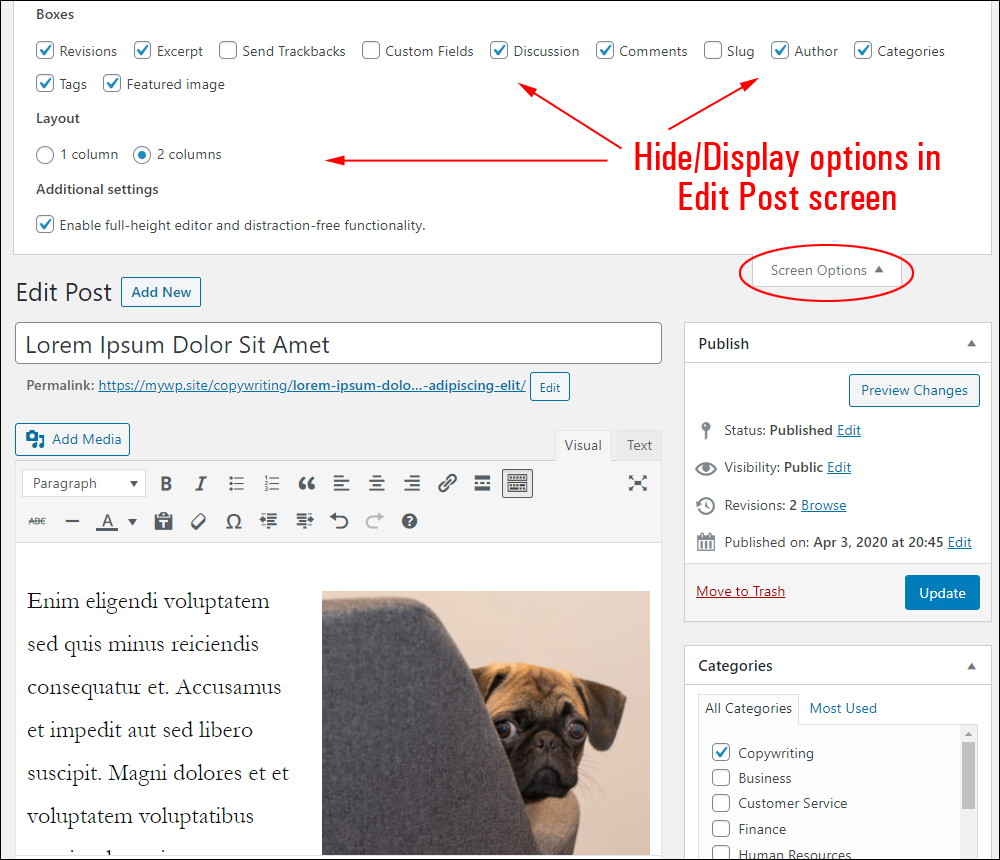
Tip #4: If you change the title of your post, remember to change its post slug to reflect the new post title.
Or, you can give your post slug a different URL to the post title to make your post URLs shorter or your post entries more clickable on search engine results, social media excerpts, etc.
To edit the post URL (post slug) click the Permalink: > Edit button below the post title.
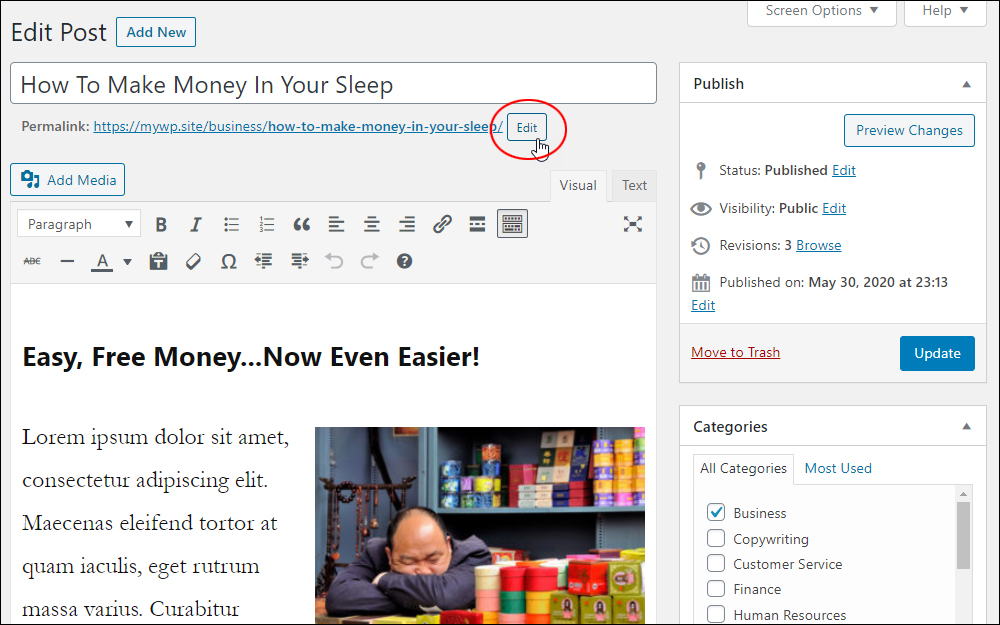
When editing the post slug, make sure to type all letters in lowercase (use “a-z” and “0-9” only) and separate words with a hyphen (like-the-words-used-in-this-example). Click ‘OK’ when done to save your new Permalink settings.

You can also do the following:
- Paste the title of your post into the Permalink: > Edit field and let WordPress automatically format your post slug correctly, or
- Delete everything inside the Permalink: > Edit field and click the OK button. WordPress will automatically enter the new post title into this field and format the post slug correctly.

Remember to update/republish your post to save your changes.
![]()
When you change the post category and/or the post slug on your published posts, WordPress automatically updates its database to reflect this change and redirects internal links pointing to the old URL to the new URL.
Tip #5: To filter posts by a specific category, click on a category in the ‘Categories’ column, or select a category from the ‘All Categories’ dropdown menu.
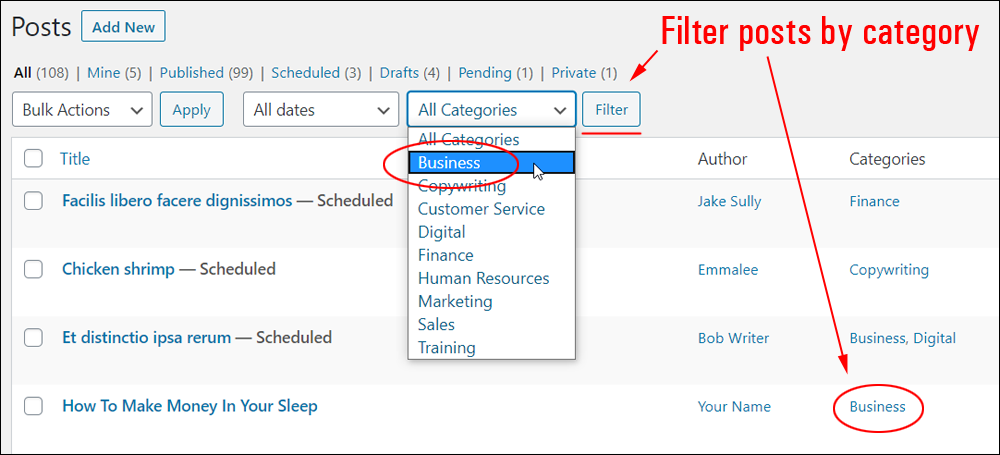
A list of all posts assigned to that category will display in the Table of Posts.
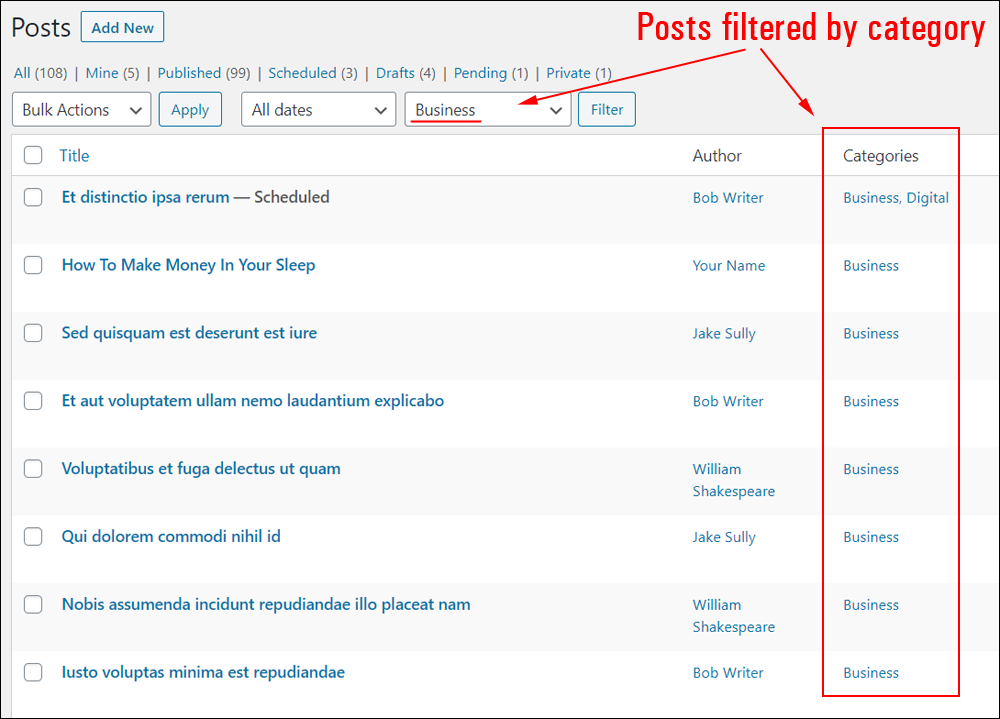
Clicking on a post category is like performing a bulk category sort. To return your Table of Posts to the default state, do the following:
- Select ‘All categories’ from the dropdown menu, then
- Click on the ‘Filter’ button.
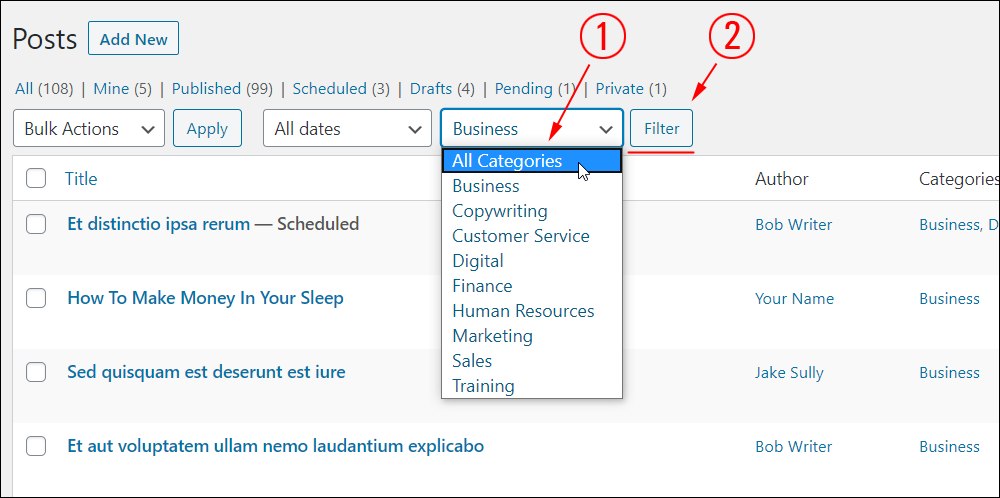
Tip: You can also restore all posts in the Table of Posts by clicking the ‘All’ Posts status menu link (below the ‘Posts’ screen title) or selecting All Posts in the main menu.
Tip #6: To filter posts containing only specific tags, click on the tag from the ‘Tags’ column…
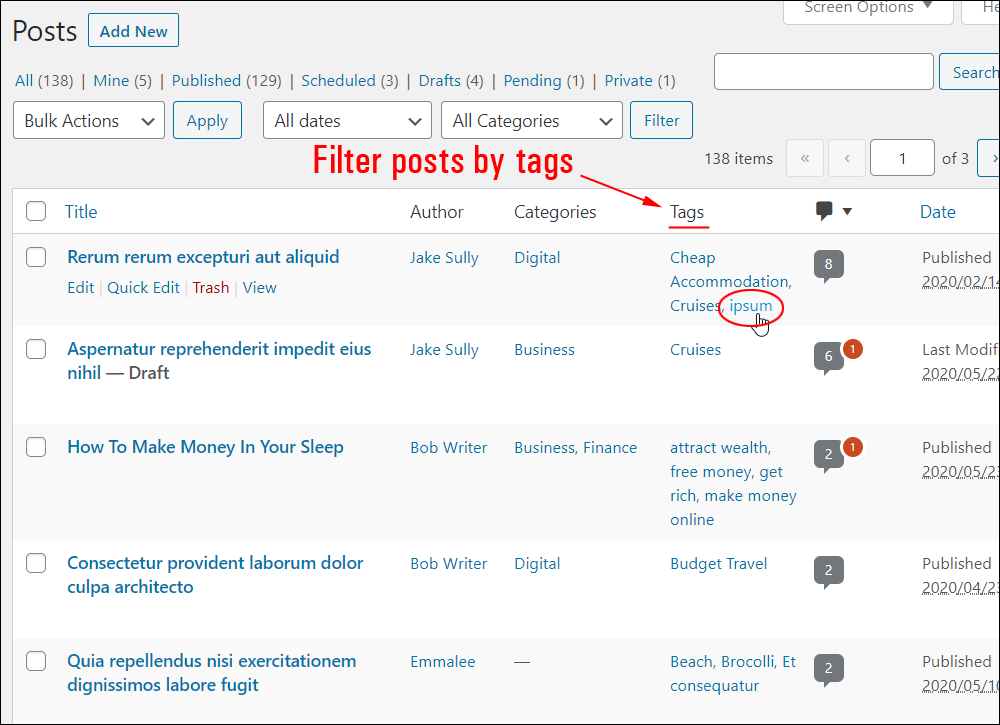
A list of all the posts associated with that tag will display in the Table of Posts.
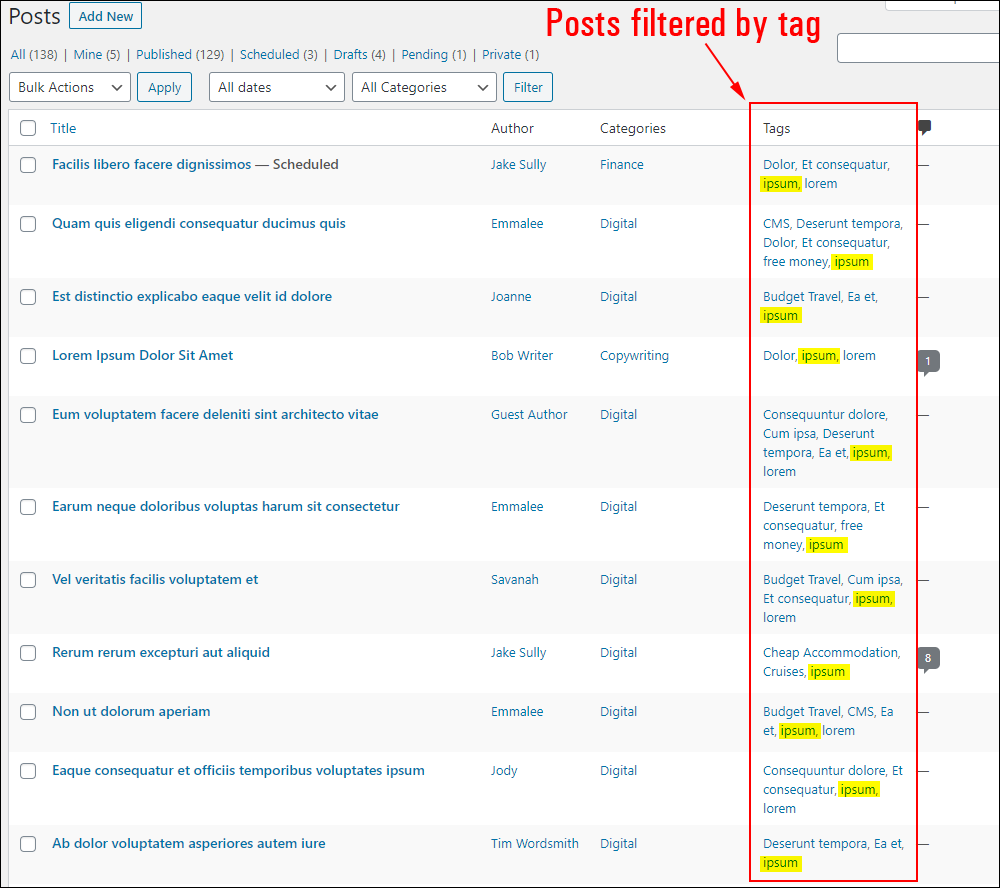
Tip #7: By default, posts display in the Table of Posts in reverse chronological order.
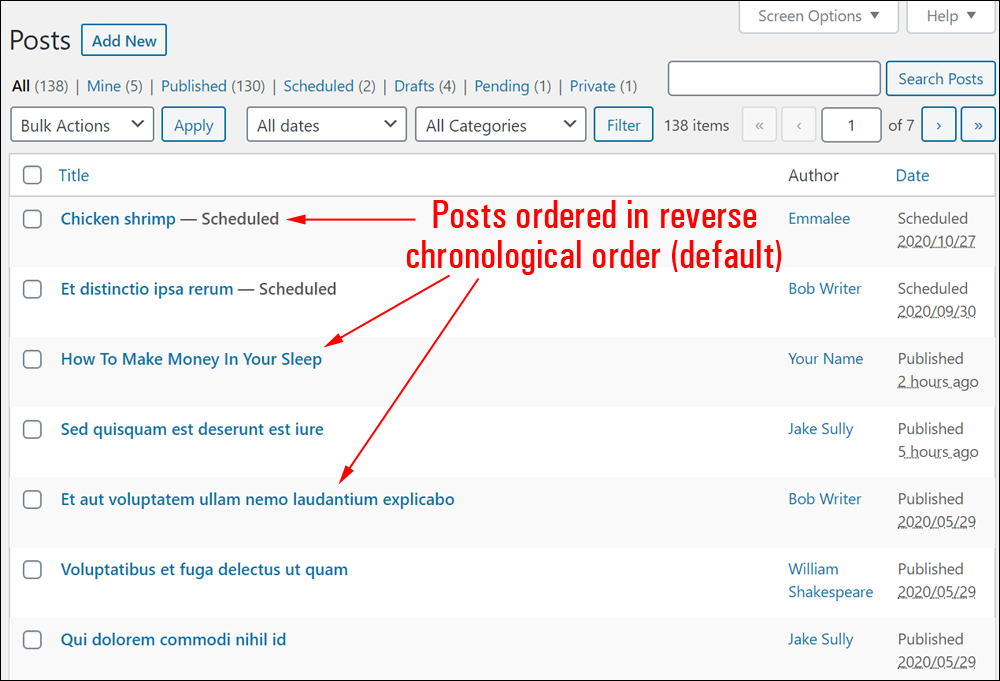
To order the list of posts in alphabetical (or reverse alphabetical) order, click on the little black triangle icon next to the ‘Title’ column header.
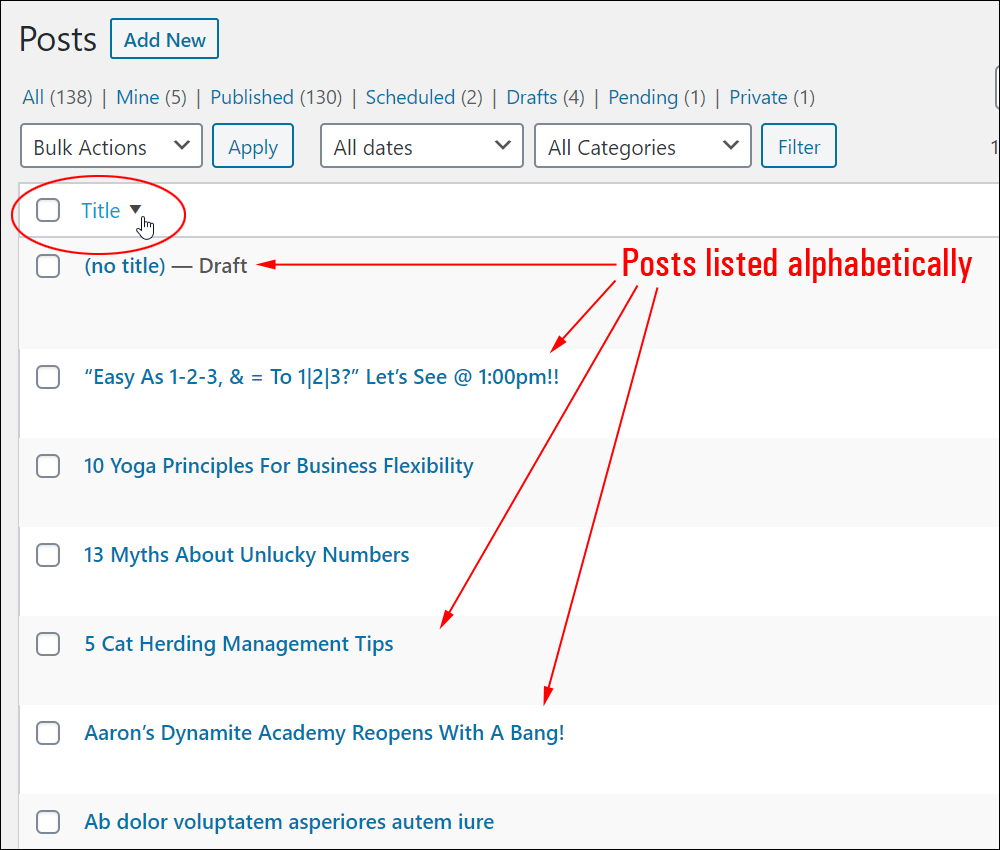
You can do the same to reorder posts by date and comments.
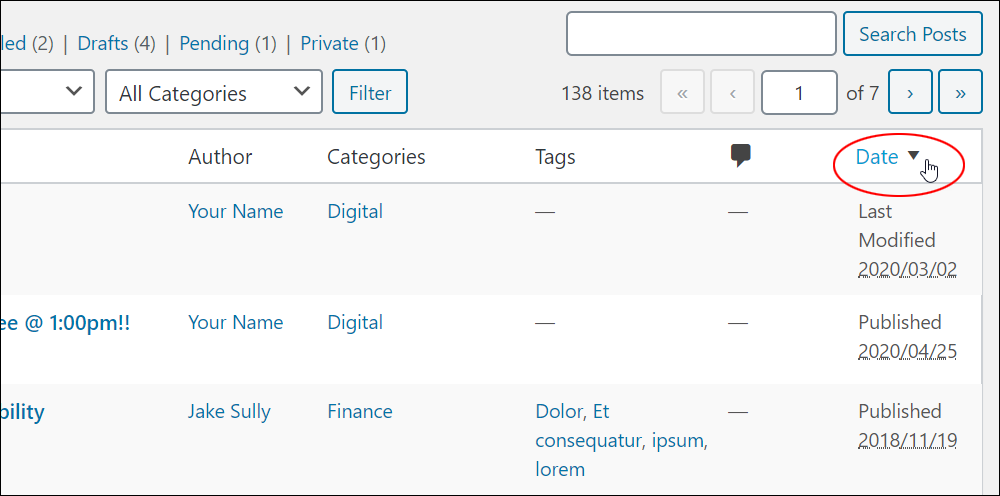
Congratulations! Now you know how to edit and delete posts in WordPress.
Related WordPress Tutorials
To get the most benefit from using the WordPress Table of Posts and improve your skills as a WordPress user, we recommend going through all the tutorials below:
- WordPress Posts vs WordPress Pages
- How To Create A Post In WordPress – Part 1
- How To Create A Post In WordPress – Part 2
- How To Use Categories In WordPress
- How To Use Tags In WordPress
- How To Use The WordPress Classic Editor
- How To Use The WordPress Quick Edit Feature
- How To Change Post Authors In WordPress
- How To Schedule Posts In WordPress
- How To Make WordPress Posts Sticky
- How To Protect Your Content In WordPress Posts & Pages
- How To Use The WordPress Block Editor
- How To Manage WordPress Users
- How To Manage Comments In WordPress

***
Updated: July 5th, 2024
